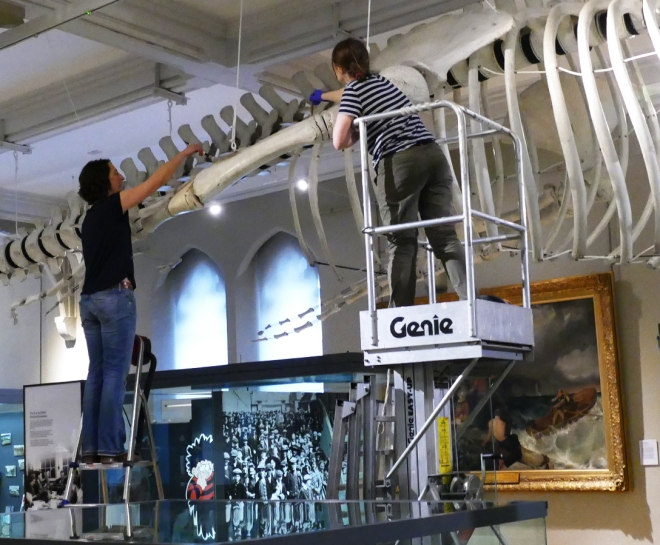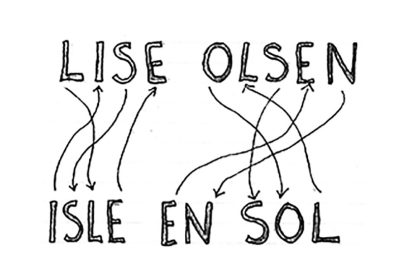
Wednesday 22nd of March
On a recent visit to the gallery, I found the McManus conservation team busy cleaning the ‘Tay Whale’, a skeleton of a Humpback whale located in the ‘Making of Modern Dundee’ exhibition. The ritual spring clean is an opportunity for the museum to clean and re-examine its displays. The conservators Becky and Carly undertook the intricate task upon a scaffold, equipped with a specialist vacuum cleaner and soft brushes. To prevent damage, they first gently brushed the dust from the many bones and then vacuumed the surface.

I was not surprised to find the museum cleaning a day after the spring equinox (the 21st of March). Yet, I began to wonder, why do we spring clean? Traditionally, spring is a time to open all the windows, to do a thorough clean, but it is also a time to celebrate rebirth and new beginnings. The conservator’s act of cleaning helps to preserve the bones of a long-dead creature, maintaining its legacy beyond death.

The whale story is immortalized by its preservation, allowing the story to be re-told. Visitors will question why this unfortunate whale a creature that lived in the sea, ended up in a gallery? It swam up the Tay in 1883, evaded capture, eventually died and was towed ashore at Stonehaven. [1] John Woods bought it at an auction and donated the skeleton to the museum. The famous Dundee poet McGonagall wrote a poem about the whale’s experience. On the strength of the Tay Whale poem and other verses, he was acclaimed to be “the worst poet in the English language”[2]. Here is an example of the first verse.
’TWAS in the month of December, and in the year 1883,
That a monster whale came to Dundee,
Resolved for a few days to sport and play,
And devour the small fishes in the silvery Tay.[3]
The whale lives on in object and tale. I believe each spring clean represents the preservation of the life force, still present in a dead inanimate object. [4] When we clean “we are negotiating with our mortality” [5]. In death, we return to dust and in time we are forgotten. The action of cleaning the bones, fundamentally allows the conservators to attempt to control the rate of the ‘Tay Whales’ demise.
[1] McManus. (date unknown). Tay Whale Skeleton. Available: http://www.mcmanus.co.uk/taxonomy/term/1253/all. Last accessed 23rd march 2017.
[2] Godfrey, P.C. (2012). Review. Available: http://www.musicweb-international.com/classrev/2013/Sept13/Zuidam_McGonagall_CC72608.htm. Last accessed 22nd March 2017.
[3] Hunt, C. (2014). The Famous Tay Whale. Available: http://www.mcgonagall-online.org.uk/gems/the-famous-tay-whale. Last accessed 22nd March 2017.
[4] Putman, J (2009). Art and Artififact: The Museum as Medium. 2nd ed. London: Thames & Hudson. P 38.
[5] Lowder, B. (2014). Rethinking Spring Cleaning.Available: http://www.slate.com/articles/life/culturebox/features/2014/rethinking_spring_cleaning/spring_cleaning_it_s_an_antiquated_ritual_but_it_s_never_been_more_important.html Last accessed 22nd March 2017.
